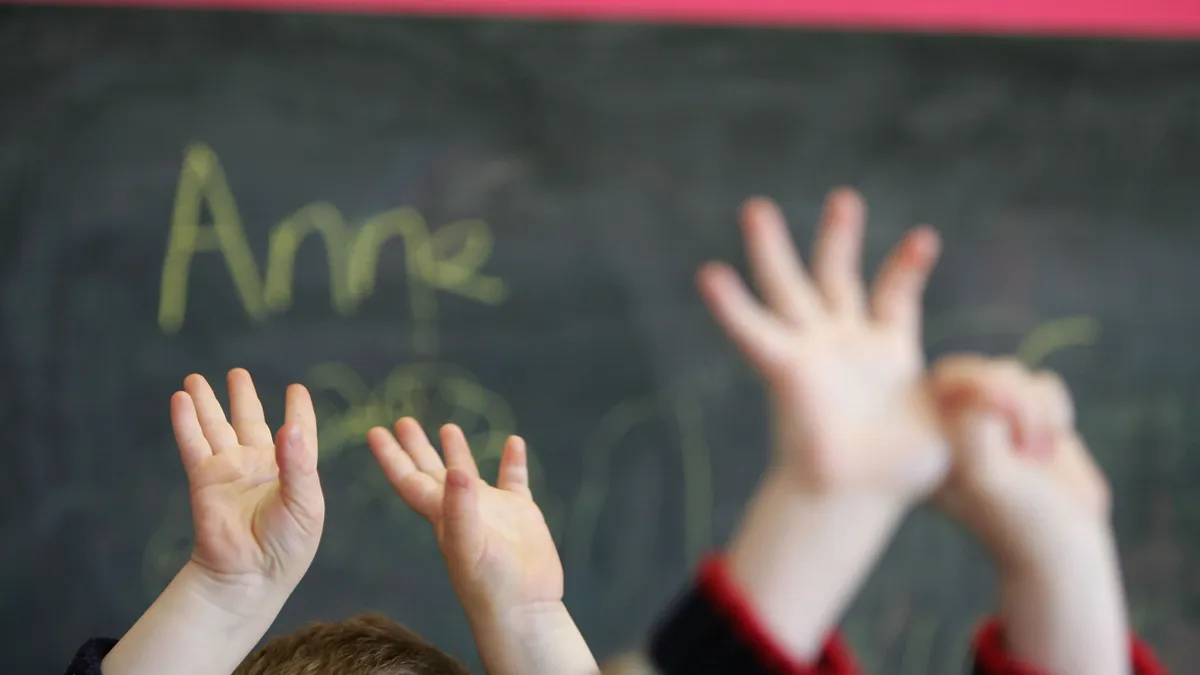Dive Brief:
- State-supported preschools are seeing a rebound in enrollment after the COVID-19 pandemic erased a decade of progress in participation, according to The State of Preschool 2022 report from the National Institute for Early Education Research and Rutgers Graduate School of Education.
- Preschool enrollment increased by 180,668 children — or 13% — in the 2021-22 school year compared to the year before, with all but seven states seeing enrollment growth. In total, 1.5 million children attended state-supported preschool programs in 2021-22.
- Participation in early education, however, is not yet back to pre-pandemic numbers, the report said. Despite the gains, preschool enrollment in 2021-22 still fell short of 2019-20 enrollment by 130,558 children — or 8%.
Dive Insight:
Among the encouraging news in the report is that preschool enrollment has more than doubled since 2001, when NIEER released its first State of Preschool report. Twenty years ago, 695,383 children attended state-funded preschool programs in 38 states. In 2021-22, 45 states had at least one state-supported preschool program and served a total of 1.5 million children.
Another encouraging data point, according to NIEER experts on a video press call Wednesday, is the increasing number of states offering or planning to offer free universal preschool. Currently, the District of Columbia and six states — Florida, Iowa, Oklahoma, Vermont, West Virginia and Wisconsin — offer preschool to all 4-year-olds. Washington, D.C., and Vermont also serve 3-year-olds.
And just in the past year, California, Colorado, Hawaii and New Mexico passed laws to provide universal preschool programming.
Once California's system launches in 2026 as expected, that will change the national landscape for preschool access — given that state's large population of preschoolers, said Steven Barnett, founder and senior co-director of NIEER, during the press call.
Patricia Lozano, executive director of Early Edge California, a nonprofit early education advocacy organization, said during the call that her organization is working with school districts in the state to get ready for the preschool openings. Lozano also said the state is preparing guidance to support providers.
"So that's all exciting — working to improve the quality so our little ones get the best experience possible," Lozano said.
‘Painfully slow and uneven’ progress
Although there are recent signs of hope in expanding preschool access, progress over the past 20 years has been "painfully slow and uneven," said Barnett. For example, just 6% of 3-year-olds are in state-funded preschool programs, he said.
State spending on preschool in 2021-2022 fell $212 million lower than the previous year when adjusted for inflation, the report said. Additionally, state-spending per child has barely increased in two decades, from $6,532 in 2002 to $6,571 in 2022.
Nearly $400 million in federal COVID-19 pandemic relief funding supported pre-K programs over the last few years, but that funding only equals to about 4% of total funding. That said, Barnett told reporters he doesn't foresee states having trouble sustaining preschool offerings once the pandemic aid is depleted.
What will be a persistent challenge is hiring qualified staff to support early education, Barnett said.
One of NIEER's benchmarks for measuring quality standards in state preschool policies mentions "adequate compensation." States, however, are not assessed on this because of the difficulty in determining adequate compensation for each state.
"If more states don't respond with policies to increase compensation, we think there are going to be large continuing problems," Barnett said.













